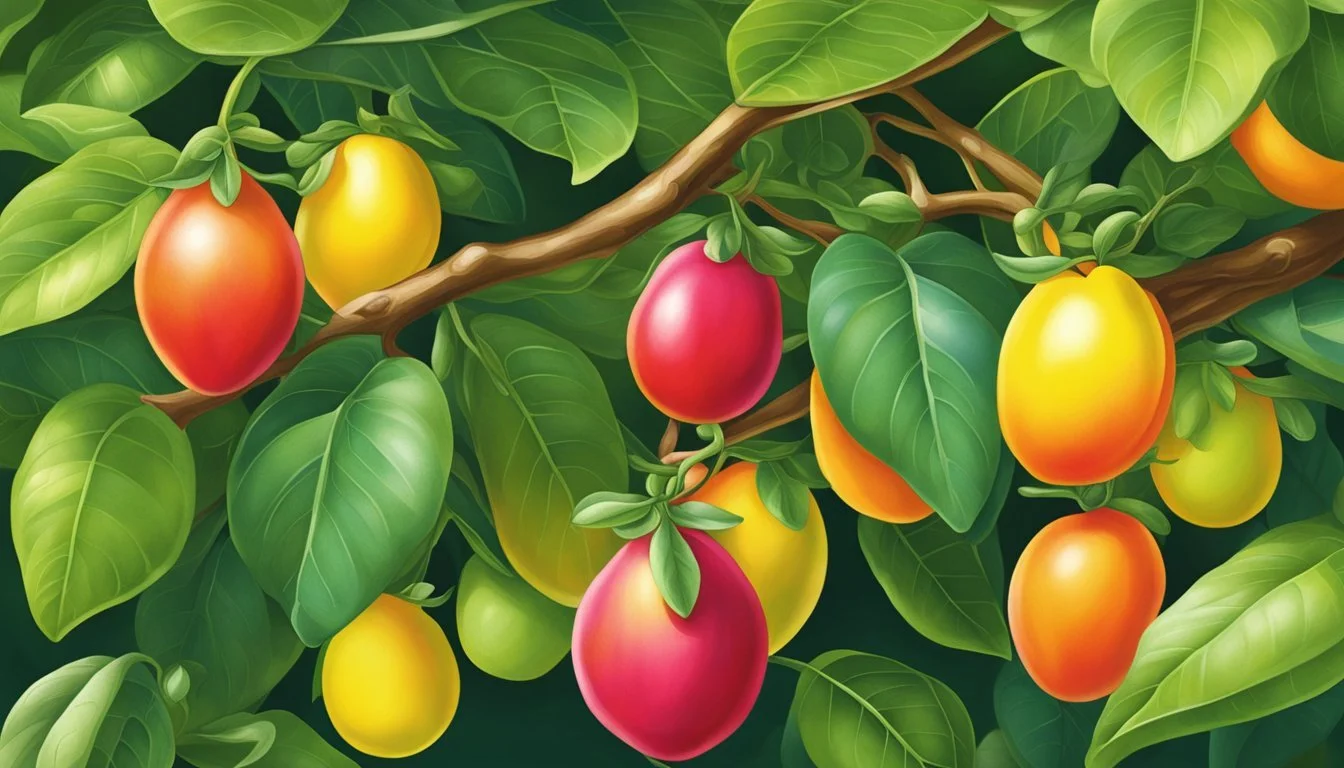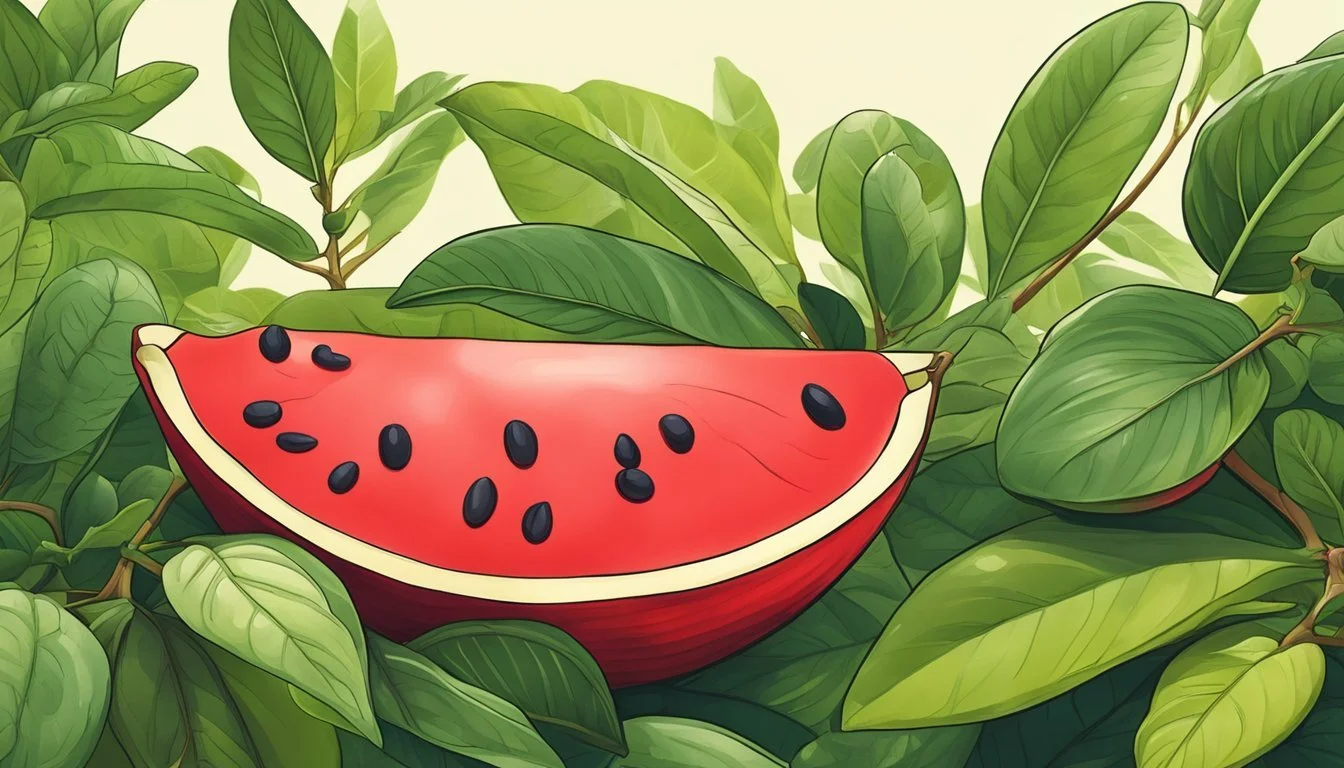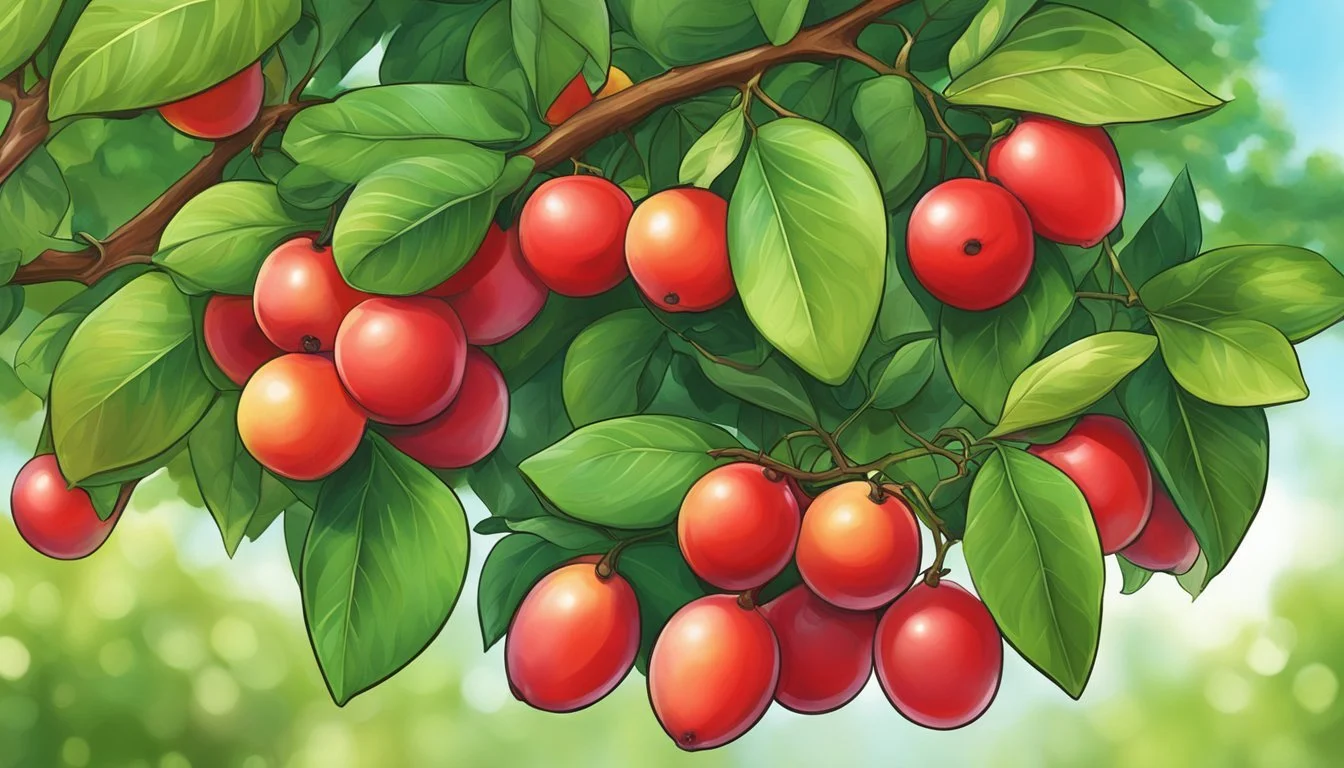How to Tell if a Miracle Fruit is Ripe
Your Guide to Perfect Timing
The Miracle Fruit, or Synsepalum dulcificum, offers a unique gustatory experience—the ability to temporarily make sour foods taste sweet. Understanding when this fruit (What wine goes well with fruit?) is ripe is crucial for experiencing its remarkable effects. An unripe miracle fruit does not possess the same ability to alter taste perceptions, and its efficacy diminishes rapidly once picked, remaining potent for less than a day. As such, knowing the ripeness of the miracle fruit has practical implications not only for taste but also for its use in culinary applications.
Ripeness in the miracle fruit is indicated by a change in color from green to a vivid red. This visual cue, however, is just one part of the story. Considering that a freshly picked miracle fruit retains its potency for a short period, the subtleties of discerning ripeness extend beyond color alone. Evaluating its readiness involves a combination of visual, tactile, and, occasionally, olfactory cues. Touch, for instance, reveals a gentle give on the skin when ripe. An accurate assessment can ensure one enjoys the full potential of the miracle fruit, whether it is consumed fresh from the plant or used in dishes and drinks to modify flavor profiles.
Key Takeaways
Ripe miracle fruit changes from green to red, indicating readiness for consumption.
Assessing ripeness involves examining color, firmness, and, in some cases, scent.
Correctly identifying a ripe miracle fruit maximizes its unique taste-modifying effect.
Understanding Ripeness
Ripeness is a crucial indicator of a fruit's readiness for consumption, characterized by optimal sweetness and texture. The journey from vine to harvest is marked by changes in color and feel, influenced significantly by environmental factors such as sun exposure.
Defining Ripeness
Ripe fruit is the stage where it has reached its peak in terms of flavor, nutritional value, and texture. For Miracle Fruit, this is when the berry exhibits a bright red color and a slightly soft texture without any green spots. The berry should detach easily from the vine, indicating that it's ready to be enjoyed for its unique sweetness-altering properties.
Stages of Fruit Maturation
The maturation of fruit is a sequential process that includes:
Development: The fruit begins to form on the vine after pollination.
Growth: It increases in size, drawing nutrients from the plant.
Ripening: This is the final stage where Miracle Fruit develops its characteristic red hue and optimal sweetness.
The Role of Ethylene in Ripening
Ethylene is a natural plant hormone that plays a vital role in the ripening of fruits (What wine goes well with fruits?). It acts as a signaling molecule that triggers the ripening process, which includes:
Enzymatic Changes: Softening of the fruit as cellulose and pectin break down.
Chemical Changes: Increase in sugars and decrease in acidity, resulting in heightened sweetness.
Once ethylene is produced, the Miracle Fruit transitions from being hard and tart to soft and sweet, signaling it's ready to be harvested.
Visual Indicators of Ripeness
When determining the ripeness of miracle fruit, one should closely observe the color, skin texture, and size and shape as these changes provide the most reliable visual cues.
Color Changes
A miracle fruit transitions in color from green to a rich red hue as it matures. In general, fruits exhibit specific color changes when ripe; apples and pears shift from green to yellow or red, peaches often display a deepening yellow, and bananas change from green to yellow. Cherries and tomatoes transform to a vibrant red, while blueberries, blackberries, and raspberries evolve from a reddish or greenish hue to their respective shades of blue, black, and red. Grapes become translucent, pomegranates turn a deep red or brownish tone, and citrus fruits like oranges, lemons, and limes develop a bright, consistent coloring.
Skin Texture
The skin of the miracle fruit smoothens as it reaches ripeness. Similarly, a ripe tomato will have a smooth, taut skin free of wrinkles. Conversely, fruits such as peaches and pears also may exhibit a slight give under gentle pressure, which can be felt along with the skin's texture. Overripe fruits often feel mushy and may show signs of wrinkling or shriveling.
Size and Shape
Miracle fruits attain a full, plump shape when they are ready for consumption. In concert with the miracle fruit, most berries such as blueberries, raspberries, and blackberries show a full and plump form upon ripening. As for stone fruits like peaches and cherries, the development of a round, full contour signifies that they have reached their optimal state. Another example is bananas, which straighten slightly and become fuller in size as they ripen.
Tactile Indicators
When assessing the ripeness of Miracle Fruit, two primary tactile indicators are firmness and surface feel. These indicators offer reliable cues that can be assessed through touch.
Firmness
A ripe Miracle Fruit should have a slightly soft but not mushy texture. One can gauge this by gently squeezing the fruit similar to how one would check avocados or peaches.
Underripe: The fruit will feel firm with little to no give.
Ripe: There should be a slight give under gentle pressure, akin to pressing a ripe mango or kiwi.
Overripe: If the fruit feels too soft or mushy, it may be past its peak freshness.
Surface Feel
Beyond firmness, the surface feel of Miracle Fruit provides another cue for ripeness. The skin of a ripe berry should be plump and smooth without wrinkles.
Ripe: Look for a surface that is smooth and free of wrinkles, resembling the skin of a ripe cantaloupe.
Underripe: An underripe fruit often has a firmer, more rigid surface.
Overripe: Wrinkled or puckered skin indicates that the Miracle Fruit may be overripe, similar to an aged watermelon or honeydew.
Touch is a key sense in detecting the perfect stage for consumption, ensuring a delightful experience with the Miracle Fruit.
Olfactory and Taste Assessment
When determining the ripeness of a Miracle Fruit, olfactory and taste assessments are critical. One can often identify a ripe Miracle Fruit through its subtle aroma and distinct taste profile.
Smell as an Indicator
The aroma of ripe Miracle Fruit is not as pronounced as in other fruits like mangoes or passion fruit. However, a ripe Miracle Fruit may emit a mild sweet fragrance. A complete absence of aroma or an off-smell can indicate that the fruit is either unripe or overripe. It is crucial to understand that the Miracle Fruit's defining feature is not its own taste or smell, but its ability to modify the taste perceptions of other foods.
Taste Testing
To assess the ripeness of Miracle Fruit through taste, one must be aware that the fruit itself has a relatively neutral flavor when ripe. The key indication of ripeness is its effect on the palate:
Before consuming: Fruits such as strawberries, pineapple, plums, mangoes, figs, and passion fruit may taste as expected for their respective states of ripeness.
After consuming Miracle Fruit: These same fruits should exhibit an enhanced sweetness. Sour and tart flavors, typically present in fruits like green apples and cranberries, may taste sweet. This taste alteration is the Miracle Fruit's hallmark.
Performing a taste test by comparing the flavors before and after eating Miracle Fruit can help determine its efficacy and, thus, its ripeness. If the sweet-modifying effect is strong, it indicates that the Miracle Fruit is ripe.
Picking and Storing Techniques
When dealing with Miracle Fruit, it is crucial for the reader to understand the optimal timing for harvesting the fruit and the best practices for storage to maintain its unique properties.
When to Harvest
Miracle Fruit should be harvested when the berries are fully ripe. This can be identified by a rich red hue and a slight give to the fruit when lightly pressed. They should detach easily from the vine, indicating peak ripeness. One should not harvest the fruit prematurely, as Miracle Fruit does not ripen effectively off the vine.
Proper Storage Methods
Once harvested, Miracle Fruit should be stored properly to prolong its shelf life. If one intends to use the berries shortly after harvest, they can be kept at room temperature on the counter, away from direct sunlight, which typically preserves their quality for a few days. For longer storage, refrigeration is essential. Here is how one should approach it:
Unwashed Fruit: Store unwashed berries in the refrigerator to avoid excess moisture, which could lead to spoilage.
Temperature: Maintain a consistent temperature of 32°F to 41°F.
Packing: Place the berries in a breathable container to avoid moisture accumulation.
Cut Fruit: If the berries are cut, they should be stored in airtight containers and refrigerated immediately. This prevents loss of potency and flavor.
Following these techniques allows one to enjoy the remarkable characteristics of Miracle Fruit at home.
Signs of Overripe or Spoiled Fruit
When it comes to miracle fruit, discerning the signs of overripe or spoiled produce is crucial to ensure optimal taste and safety. The following subsections provide clear indications to help identify when the miracle fruit has passed its prime.
Visual Spoilage Cues
An overripe miracle fruit often exhibits a darker coloration than when it is ripe. As it begins to spoil, brown spots may appear on the skin. Consumers should look for discoloration or any presence of mold, which are reliable indicators of spoilage.
Changes in Texture and Smell
The fruit’s texture will noticeably soften and may become mushy when overripe. A spoiled miracle fruit may also emit a fermented odor, contrasting the subtly sweet smell of ripe fruit. If the fruit feels hollow or if the skin wrinkles when gently pressed, it is likely past its consumable stage.
Health Risks of Spoiled Fruit
Consuming spoiled fruit, including miracle fruit, can pose health risks. Overripe or moldy produce can harbor bacteria and pathogens. If there is any doubt about the fruit’s freshness, it is safer to err on the side of caution and discard it.
Common Mistakes to Avoid
When assessing the ripeness of a miracle fruit, it's crucial to avoid certain common practices that can lead to misjudgment or even damage to the fruit. Understanding the correct methods of evaluation will ensure that the integrity of the fruit is maintained and that one can enjoy its unique taste at its prime.
Handling and Squeezing
Individuals often believe squeezing the fruit with their hands is an appropriate way to test ripeness. However, this is not recommended for miracle fruit. Miracle berries are delicate, and excessive pressure can bruise the flesh, compromising their quality and flavor. It is best to handle them with care, using gentle pressure, if necessary, to assess firmness, without causing any damage.
Correct: Light touch with fingertips
Incorrect: Firm squeeze that deforms the berry
Misinterpreting Color
Another mistake is to solely rely on color as an indicator of ripeness. For miracle fruit, it's not just about shifting from green to red. A ripe miracle fruit should exhibit a vivid red hue but may still have areas of green. A common error is to overlook a miracle fruit because it doesn't have a uniform red color. Look for a glossy finish and a yellow spot where it attaches to the stem, as these are more reliable indicators of ripeness.
Glossy red: Indicative of ripeness
Uniform bright green: Likely underripe
Presence of a yellow spot: Signifies a connection to the stem and potential ripeness
By steering clear of these common missteps, one can better identify when a miracle fruit has reached its perfect state for consumption.
Frequently Asked Questions
The Frequently Asked Questions section addresses common inquiries related to the ripeness and consumption safety of miracle fruit.
Ripeness vs. Sweetness
One may often confuse sweetness with ripeness, but they are not always synonymous. A miracle fruit's sweetness intensifies as it ripens, with the ripe fruit altering the taste perception of sour and bitter foods (What wine goes well with bitter foods?), making them taste sweet.
Is It Safe to Eat Fruit That Is Not Fully Ripe?
Consuming a miracle fruit that is not fully ripe is generally safe, but the experience may not be as enjoyable since the fruit's unique sweetness-enhancing properties are not fully developed.
Conclusion
Determining the ripeness of miracle fruit is essential for the best flavor experience. One can identify a ripe miracle fruit by its vibrant red color and slight give upon gentle pressure. Gardeners should harvest the berries when they are fully colored and detached easily from the plant. It is advised to consume the fruit shortly after picking for peak sweetness enhancement.
When enjoying miracle fruits, individuals should remember that the effects are temporary. The miraculin protein within the fruit coats the taste buds and can make sour foods taste sweet for up to an hour. For those cultivating the plant, consistent care in a warm, humid climate will ensure a bountiful harvest of ripe fruits.
Here are key tips to remember:
Visual Check: Look for a full red color without green spots.
Texture: A ripe berry should yield slightly to gentle pressure.
Taste Test: If possible, sampling a small piece can confirm if the fruit is ready.
Storage: Once ripe, miracle fruits should not be stored for long periods and are best enjoyed fresh.
By following these guidelines, one can fully appreciate the unique qualities of miracle fruits.







